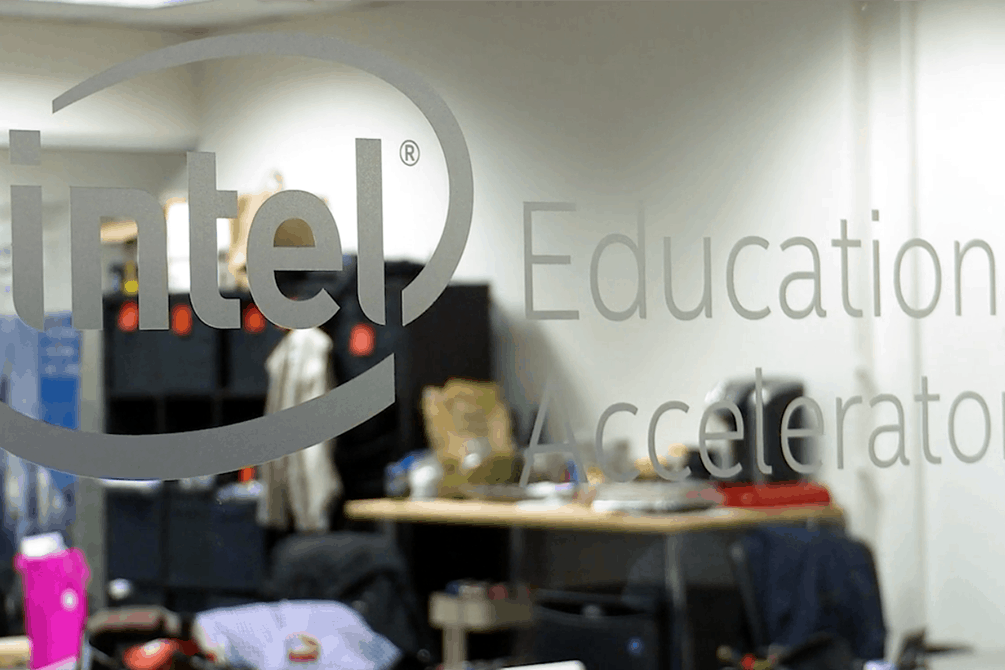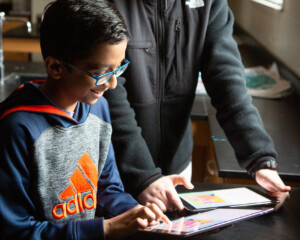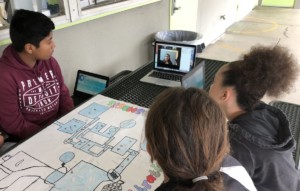Intel Education Accelerator Forecasts 2016 EdTech Trends

John Galvin
The Intel Education Accelerator – a specialized accelerator program for education technology startups – wrapped up its first cohort with a demo day, which gave the participating companies an opportunity to pitch their products to potential investors and partners. We’re very proud of these eight companies and look forward to seeing their products help students around the world and drive excellence in education.
I’ve learned a lot over the past four months, but I think the most interesting thing I’ve observed is that the Intel Education Accelerator is essentially a microcosm of the education technology landscape – and as it’s populated by innovative, cutting-edge startups, it’s an excellent indicator of the latest trends. Based on this experience, I’ve predicted five top education technology trends for 2016:
Engaging women, underrepresented minorities and low-income students in science, technology, engineering and math (STEM) will continue to be a major focus.
In the last few years, the lack of diversity in science, technology, engineering and math (STEM) fields has gained recognition as a serious barrier to economic growth and global competitiveness. While there are numerous contributing factors, lack of access or exposure is at the root of the issue – and that’s where learning tools like VidCode or PocketLab come in.
Built by women with teen girls in mind, VidCode teaches computer programming to girls by enabling them to upload videos, customize them with JavaScript and share with friends. By connecting coding to their creative interests and social lives, this software helps engage girls in computer science and expands their understanding of potential applications and careers.
Digital tools will continue to provide new ways for students to express themselves, gain key skills and become creators.
To succeed in the workforce of tomorrow, students must become creators of digital content and knowledge instead of passive consumers, and develop 21st century skills such as creativity, critical thinking and digital literacy. This shift is already taking place through the maker movement in education, but it’s also starting to create new opportunities in teaching and learning across the curriculum.
One of these companies, WriteReader, allows children as young as 3 to create, publish and receive feedback on online books that can be read by their teachers, peers and family, helping them improve their reading and writing skills.
New technologies will extend the meaning of anytime, anywhere learning, allowing them to participate in authentic learning experiences seamlessly throughout their day.
As part of the shift away from traditional education methods, education technology continues to find new, creative ways to use students’ interests to increase engagement in learning and make lessons relevant to their daily lives. In the coming year, we can expect this trend to continue as edtech companies find exciting ways to incorporate learning activities into everyday activities.
Like its peer company VidCode, Words U engages students through one of their favorite activities: texting. This app helps students build their vocabulary while texting by suggesting synonyms as they type, allowing them to learn new words by using them in context. Words U also incorporates elements of gaming to engage students, letting them level up as they expand their vocabulary.
Assistive technologies will become more specialized and better address the needs of students with learning differences.
According to the National Center for Education Statistics, 13 percent of all public school students receive special education services – which translates into an urgent need for assistive technologies to meet the individual needs of students with learning differences. In 2016, I expect to see a growing number of specialized assistive technologies that better address a diverse range of learning differences, from autism to dyslexia to language impairments.
A prime example of this trend, BeeLine Reader is an effective reading tool for students with dyslexia, attention deficits and visual impairments, as well as early readers and adults. By using color gradients to help readers transition between lines more quickly and easily, it accelerates literacy acquisition and enables all readers to read more efficiently and effectively.
The rise of online tutoring will provide access to on-demand individualized tutoring at an affordable price.
Online tutoring is making education more accessible than ever. These increasingly in-demand services provide anywhere, anytime tutoring at a reasonable price, allowing a wider range of students to benefit from instruction tailored to them. We can expect online tutoring to become increasingly personalized in the coming year and beyond.
GotIt!, an on-demand tutoring app, allows high school students to post a photo of a homework problem and be connected to a study expert in seconds. The expert provides a detailed, step-by-step explanation of the problem and chats with the student to ensure complete learning and understanding.
Griti delivers personalized learning to college students by connecting them to custom video tutorials – tailored to the student’s specific course, professor, and syllabus – created by top-performing students on campus. The platform combines the convenience of instant streaming video with responsive, customized content that anticipates students’ needs.
@Gritilearn is thrilled to be part of the inaugural cohort at #Intel Education #Accelerator. http://t.co/xTYqJLO7Tl pic.twitter.com/dhbM1XAsWR
— Stephen Broadbent (@StephenBGRITI) August 6, 2015
In 2016, we can expect to see increasingly innovative ways of optimizing student engagement; delivering personalized learning experiences; encouraging creativity and intellectual curiosity; and helping all students reach their full educational potential. As the companies in our accelerator demonstrate, it’s a future we can all look forward to.
To learn more about the Intel Education Accelerator, please visit Intel.com/EduAccelerator.
For more check out:
- 5 HigherEd Learning Trends About to Reshape the Workplace
- 8 Online Learning Trends that are Changing the Learning Landscape
John Galvin is the general manager of Intel Education and a vice president of the Sales and Marketing Group at Intel Corporation. Follow Intel Education on Twitter, @IntelEDU.
Stay in-the-know with all things EdTech and innovations in learning by signing up to receive the weekly Smart Update.





0 Comments
Leave a Comment
Your email address will not be published. All fields are required.